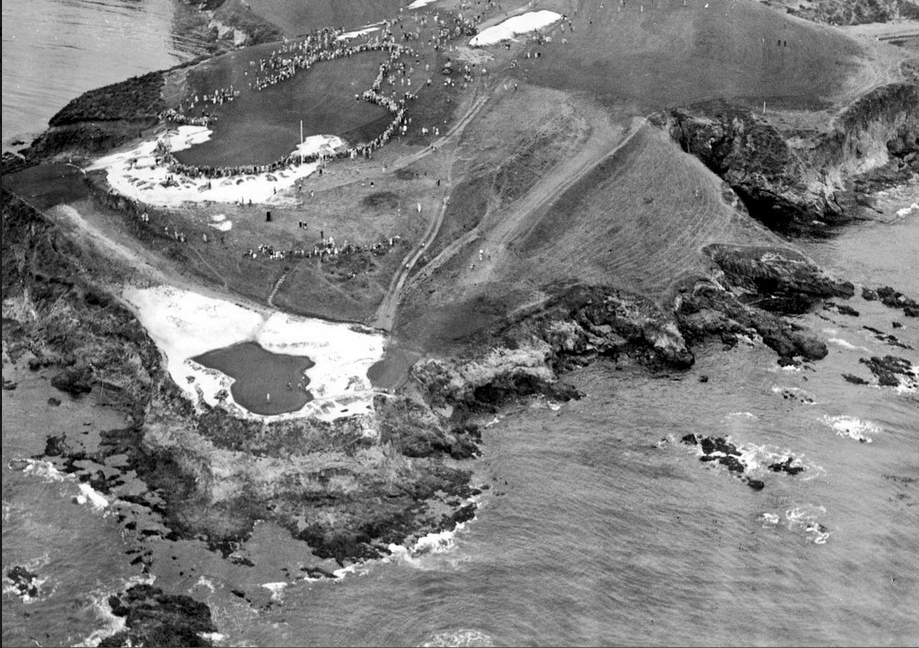It’s Time For Pebble Beach To Commision A Master Plan
/As the restoration movement continues to reinvigorate tired properties, the power and clarity delivered by a master plan document is often forgotten as the long term key to a healthy design.
Understandably, the excitement over better playing and looking golf holes becomes the focus after a restoration. But these projects almost never commenced without a document evaluating the original design’s evolution or the changes necessary to improve things. They also provide a fine opportunity for vital “under-the-hood” improvements required to carry a course into the future.
Countless classics were guided by these documents and now swear by them, sometimes religiously clinging to the plan without some wiggle room to make modifications. But given the history of green committees, ironclad plans prove wiser than leaving leeway for amateur architects to leave their mark.
The latest addition to Pebble Beach demonstrates, in glaring fashion, the danger of not having a master plan or a genuine grasp of the architectural high-point of a course. The planting of South African gazanias on one of golf’s most beautiful locales needing no help suggests it is time for America’s national golfing treasure to commission a serious master plan. To not recognize the architectural and landscape malpractice suggests either too many or not enough cooks are in the Pebble Beach kitchen.
There really is no shame in having reached this point, as most of the best courses in the world were driven to consider their design past and future after some sort of gaffe. Nearly in every case it was not a general realization of architectural decline, but instead something as gaudy as a goofy gazania bed.
Besides the non-native component, accentuated by seeing actual wildflowers sprouting randomly on the gorgeous cliffs of Pebble Beach, this “look at me” execution may be the most robust splash of color since Dorothy, Toto and friends were off to see the Wizard. (Only they waded through fields of poppies, the state flower in California that bloom in springtime.)
Taking a hard look at Pebble Beach’s design evolution and targeting the course at its peak would help the famed resort understand priorities in aesthetics, strategy and playability. There has been a sense that doing so would damage the grand story of amateurs Jack Neville and Douglas Grant, commissioned by Samuel Morse and concocting the masterpiece we know today. Their masterful routing will always be integral to the Pebble Beach story, however, design trends evolved over the decade following their effort and the course ultimately came together with touches from Herbert Fowler, Alister MacKenzie, and then most significantly, thanks to Chandler Egan and Robert Hunter's pre-1929 U.S. Amateur remodel. Egan reached the semi-finals of that amateur and is one of America's greatest amateur golfers.
A study of that 1929 effort would show larger and more intricate green shapes and a better attempt at injecting a sense of naturalness on a magnificent site plagued in early days by geometric and unsightly features. The old images below validate the unique qualities of the 1929 version and while the current ownership of Pebble Beach has taken the resort from hard times to grand stewardship, the golf course vision has fallen behind the clarity they've shown in maintaining the overall Pebble Beach community. It's time for the resort to consider restoration professionals who can identify the best features, understand how the course has evolved, and steer Pebble Beach in a direction that best embodies the course at its peak. Given the importance of the course, perhaps even a bake-off style process open to many architects will provide even more clarity.
From a strictly business perspective, I suspect such a plan would right the rankings ship, which has seen Pebble Beach slipping in all of the major magazine rankings. While this amazing place is not in danger of failing just because magazine panelists are giving lower golf course grades, they are sending a message: Pebble Beach is not as good as it should be.
As I argued this week on Golf Central, the design is actually underrated and should be the undisputed No. 1 course in America. Currently, it is not, and a bed of gazanias won't help make golf's most beautiful setting any prettier. The flower bed merely highlights the need to commission a master plan.
Above the 7th hole, 1929 U.S. Amateur and 2018 AT&T Pebble Beach Pro-Am along with more scenes from the old days:














